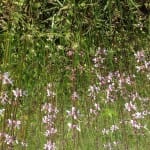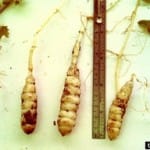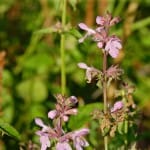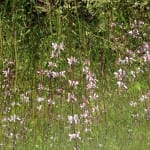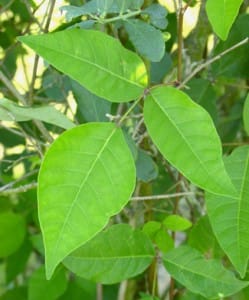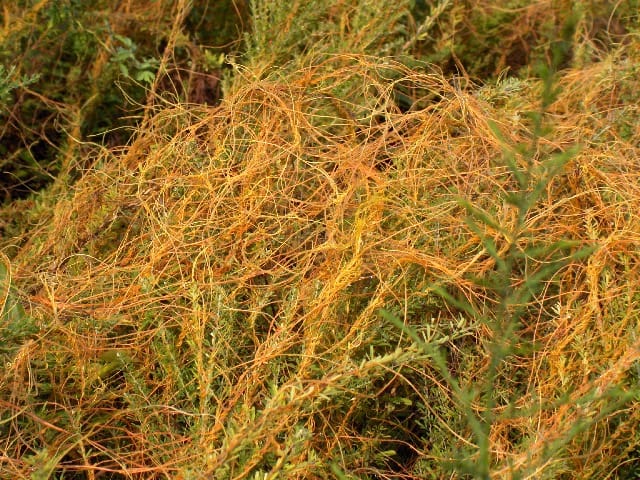Source(s): Mark Czarnota
Florida betony or rattlesnake weed (Stachys floridana) is a problem weed in both turf and ornamentals. Florida betony or rattlesnake weed is a “winter” perennial. Florida betony is dormant during the hot, humid summers of the South. In most of Georgia, Florida betony growth begins in early to mid fall, slows in the extreme cold of winter, and continues until late spring.
Like most plants in the mint family, betony has a square stem with opposite leaves. The leaves are up to two inches long with little teeth on them and the plant smells when crushed. Flowers of betony are usually pink and have the classic mint like structure. Unlike its relatives, it has the unique characteristic of producing glossy, white tubers that look like the rattles (buttons) of a rattlesnake, hence the name. Tubers of Florida betony can reach lengths of over 1 meter in soils with high sand contents, but they are usually one to several inches long.
In turf grass, products containing atrazine, 2,4- D, dicamba, or mecoprop provide good selective control. Other herbicides have shown some control of Florida betony on turf grass. University of Georgia research found that the following herbicides provided greater than 70% control 2 months after application: Monument (trifloxysulfuron), Manor (metsulfuron), Revolver, (foramsulfuron), and Speedzone (carfentrazone, 2,4-D ester, mecoprop, and dicamba). These herbicides are labeled only for turf grass.
In ornamentals, dichlobenil (sold under the trade name Casoron®) provides excellent control of Florida betony in some established woody ornamentals. Dichlobenil cannot be applied over every ornamental plant. Check the label to see where it can be used.
Products containing the active ingredient glyphosate (i.e. Roundup®), can be used to control this plant in ornamental beds if applied as a spray directly to betony without contacting desirable plants.
Consider using glyphosate if establishing a new ornamental planting into an area containing betony. Apply a 5% spray solution of glyphosate 1 week prior to cultivating the area. This will help reduce much of the betony population. Repeat applications to eliminate survivors will be necessary. Maintaining a good 4 to 6 inch layer of pine bark or pine straw may eventually smother the betony.
Resource(s):
Center Publication Number: 272
